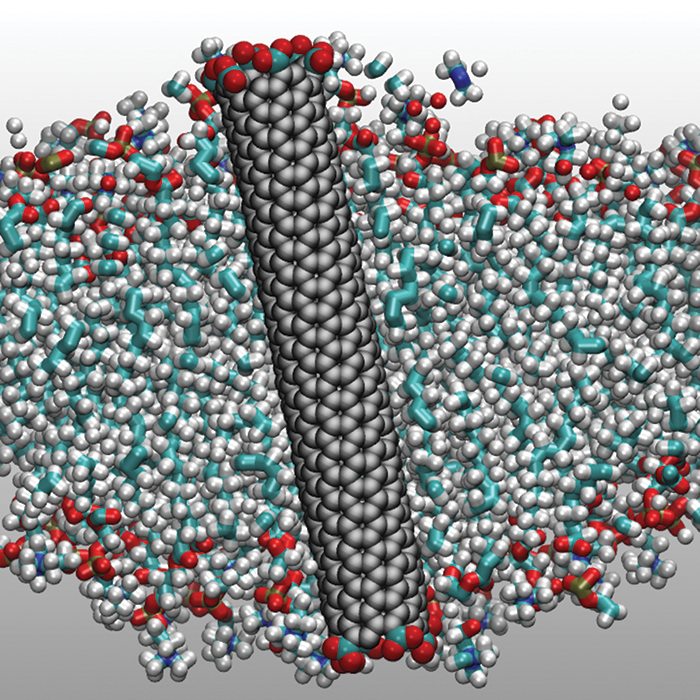Skinny Nanotubes Break Aquaporin’s Record for Moving Water
Published on by Water Network Research, Official research team of The Water Network in Academic
Water molecules slide rapidly through the 0.8-nm-diameter tubes.

This computer-generated image shows a skinny nanotube
embedded in a lipid membrane.
Credit: Yuliang Zhang and Aleksandr Noy
The membrane protein known as aquaporin, which shuttles water in and out of cells, has long held the record as the most efficient water-trafficking system. Now, scientists have discovered one that’s six times as fast: a membrane full of skinny carbon nanotubes. The finding could lead to desalination membranes that resist biofouling and operate more efficiently.
The nanotubes in the new system are just 0.8 nm in diameter, so water molecules must slide through them single file—a process that speeds the molecules’ transport (Science 2017, DOI: 10.1126/science.aan2438). Aquaporin also makes water travel single file, but amino acids on the inside of its channel hydrogen bond to the water molecules and slow their transit compared with those sliding along the molecularly smooth nanotubes’ interior.
“There is always interesting physics to observe by just looking at how things are done in nature,” says Aleksandr Noy, the Lawrence Livermore National Laboratory scientist who led the research. “Then you can go back to the lab and use that information to design new systems and materials.” Noy says that aquaporin was his inspiration to create the skinny-nanotube system and that it “was always the molecule to beat.”
“What is most exciting,” says Zuzanna Siwy, an expert in nanopore physics at the University of California, Irvine, is that Noy and coworkers “have identified a man-made system that is even more efficient than the biological system of aquaporin.”
Read full article and watch a video: Chemical & Engineering News
Media
Taxonomy
- Treatment
- Treatment Methods
- Nanotechnology
- Desalination
- Desalination
- Nanotubes